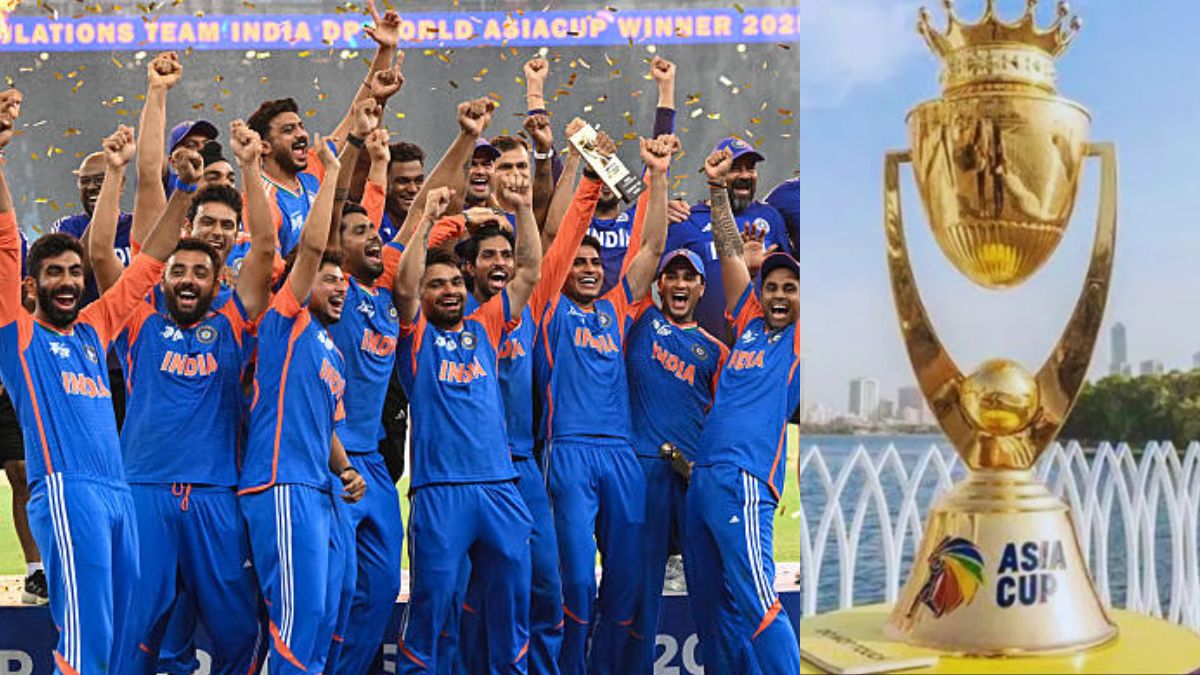
एशिया कप 2025 (Asia Cup 2025) में भारतीय क्रिकेट टीम ने पाकिस्तान को हराकर खिताब को अपने नाम कर लिया है भारतीय क्रिकेट टीम के सभी खिलाड़ियों ने एशिया कप 2025 में बेहतरीन खेल दिखाया और सभी खिलाड़ियों के सहयोग से ही टीम नवीं मर्तबा ट्रॉफी जीतने में सफल हो पाई है।
एशिया कप को समाप्त हुए दो दिन भी नहीं हुए और खेल प्रेमियों को एक बुरी खबर सुनने को मिली है। दरअसल बात यह है कि एक खतरनाक तेज गेंदबाज ने डिप्रेशन में आकर संन्यास का ऐलान कर दिया है। इस खबर को सुनने के बाद सभी खेल प्रेमी बेहद ही मायूस हो गए हैं और इस खिलाड़ी के संन्यास की मुख्य वजह को जानने की कोशिश कर रहे हैं।
Asia Cup 2025 के बीच इस खिलाड़ी ने किया संन्यास का ऐलान

एशिया कप 2025 (Asia Cup 2025) में भारतीय क्रिकेट टीम ने शानदार खेल दिखाते हुए फाइनल मुकाबले में पाकिस्तान को 5 विकेट से हराकर खिताब को अपने नाम कर लिया। खेल प्रेमी इस जीत का जश्न मना ही रहे थे कि उन्हें एक बुरी खबर सुनने को मिली। खबरें आई कि, एक खतरनाक तेज गेंदबाज ने डिप्रेशन में आकर अपने क्रिकेट करियर को विराम लगाने का ऐलान कर दिया है।
𝐓𝐡𝐞 𝐫𝐞𝐜𝐨𝐫𝐝𝐬 𝐚𝐧𝐝 𝐚𝐜𝐡𝐢𝐞𝐯𝐞𝐦𝐞𝐧𝐭𝐬 𝐨𝐟 𝐂𝐡𝐫𝐢𝐬 𝐖𝐨𝐚𝐤𝐞𝐬 𝐢𝐧 𝐢𝐧𝐭𝐞𝐫𝐧𝐚𝐭𝐢𝐨𝐧𝐚𝐥 𝐜𝐫𝐢𝐜𝐤𝐞𝐭!
One of England’s finest all-rounders, with 396 wickets and two World Cups to his name!
#ChrisWoakes #England #Retirement #Sportskeeda pic.twitter.com/RBMRAsjqR4
— Sportskeeda (@Sportskeeda) September 29, 2025
लेकिन अगर आप यह सोच रहे हैं कि, किसी भारतीय खिलाड़ी ने संन्यास का ऐलान किया है तो आप गलत सोच रहे हैं। दरअसल बात यह है कि इंग्लैंड क्रिकेट टीम के फास्ट बॉलर क्रिस वोक्स ने इंटरनेशनल क्रिकेट से संन्यास का ऐलान कर दिया है। वोक्स ने अपने करियर का आखिरी टेस्ट मैच 31 जुलाई से 4 अगस्त के बीच टीम इंडिया के खिलाफ खेला था। इस मुकाबले में ये फील्डिंग के दौरान इंजर्ड हो गए थे और इसी चोटिल कंधे के साथ ये बल्लेबाजी के लिए मैदान में आए थे। मगर अपनी टीम को जीत दिलाने में ये फेल हो गए थे।
इसे भी पढ़ें – पंत-अय्यर, जायसवाल नदारद! DC, MI, KKR सितारों का जलवा, T20 विश्व कप के लिए टीम इंडिया का कॉम्बिनेशन तय
टीम में नहीं मिली जगह तो ले लिया संन्यास
कुछ दिनों पहले ही इंग्लैंड क्रिकेट बोर्ड के द्वारा ऑस्ट्रेलिया दौरे के लिए टेस्ट स्क्वाड का ऐलान किया गया था और उसे स्क्वाड में मैनेजमेंट के द्वारा क्रिस वोक्स को मौका नहीं दिया गया था। इसके साथ ही यह भी बताते चले कि, इंग्लैंड क्रिकेट बोर्ड ने उनके साथ अपना सालाना अनुबंध भी समाप्त कर लिया था।
लगातार नजरअंदाज होने के बाद किस वोक्स ने संन्यास का फैसला किया और अब यह सिर्फ फ्रेंचाइजी लीग में ही खेलते हुए दिखाई देंगे। इनके संन्यास के बाद खेल जगत की कई हस्तियों ने इन्हें शुभकामनाएं दी हैं। शुभकामाएं देने वाले दिग्गजों की फेहरिस्त में भारतीय टीम के विकेटकीपर बल्लेबाज ऋषभ पंत और कोच गौतम गंभीर भी हैं।
FAQs
क्रिस वोक्स ने आखिरी टेस्ट मैच कब खेला था?
एशिया कप का फाइनल मुकाबला किन टीमों के बीच खेला गया?
भारतीय टीम ने कितने विकेटों से पाकिस्तान के खिलाफ जीत हासिल की है?
इसे भी पढ़ें – वेस्टइंडीज टेस्ट सीरीज में सिर्फ पानी पिलाने के लिए शामिल किया गया ये खूंखार खिलाड़ी, तोड़ चुका रोहित के 264 रनों का रिकॉर्ड
The post इधर भारत जीता एशिया कप, उधर डिप्रेशन में आकर तेज गेंदबाज ने कर दिया संन्यास का ऐलान appeared first on khelja.



